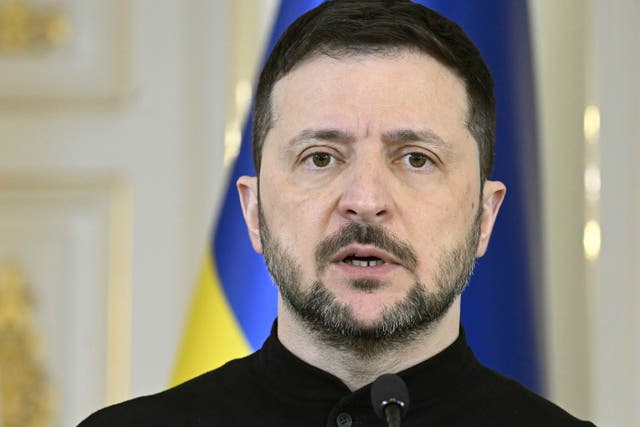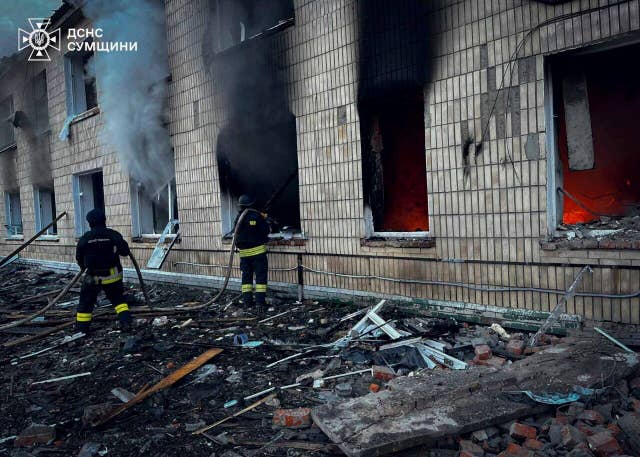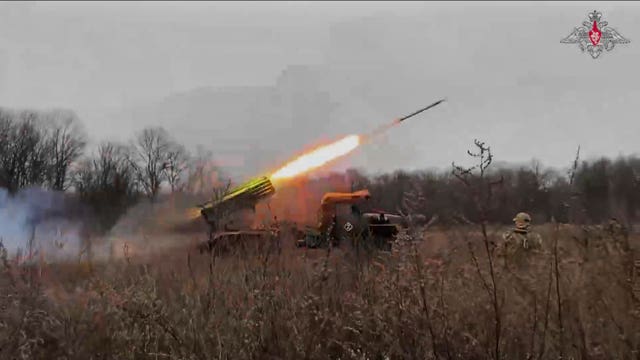Trump floats US ownership of Ukraine’s nuclear plants amid ceasefire talks

US President Donald Trump, left, Ukraine’s President Volodymyr Zelenskyy, centre, and Russian President Vladimir Putin (Aurelien Morissard, left and centre, Pavel Bednyakov/AP)
During recent ceasefire discussions, US president Donald Trump suggested that Ukraine consider allowing US ownership of its nuclear power plants to ensure their long-term security, according to White House officials.
The proposal, which arose during a call between Mr Trump and Ukrainian president Volodymyr Zelenskyy, specifically focused on the Zaporizhzhia Nuclear Power Plant — Europe’s largest facility, currently under Russian control.
A White House statement from secretary of state Marco Rubio and national security adviser Mike Waltz indicated that Trump offered US “expertise in electricity and utilities” to help operate Ukraine’s plants, with American ownership suggested as “the best protection” for the infrastructure.
Mr Zelenskyy, however, said the conversation primarily revolved around regaining control of Zaporizhzhia, rather than discussing a transfer of ownership.
The idea was floated as the Trump administration moves to finalize an agreement granting the US access to Ukraine’s critical minerals in partial repayment for American wartime support.
Meanwhile, Mr Zelenskyy confirmed that their call also covered Ukraine’s request for additional Patriot missile defense systems, with Trump agreeing to explore options, particularly in Europe.

The nuclear plant discussion comes as Ukraine and Russia agreed in principle to a limited ceasefire following separate talks with Trump this week.
However, key details—such as when it will take effect and what infrastructure will be protected — remain unresolved.
The tentative truce follows Russian president Vladimir Putin’s rejection of Mr Trump’s push for a full 30-day ceasefire.
While Mr Trump framed the partial ceasefire as a step toward peace, Mr Zelenskyy and US officials have expressed scepticism about Russia’s commitment, especially after recent overnight drone strikes targeting Ukrainian energy facilities.

A major sticking point in negotiations has been the protection of critical infrastructure.
After Mr Trump’s call with Mr Zelenskyy, the White House stated that the ceasefire would cover both “energy and infrastructure.”
However, the Kremlin insisted it applies only to “energy infrastructure,” while Zelenskyy pushed for broader protections, including railways and ports.
Mr Zelenskyy said upcoming talks in Saudi Arabia would aim to clarify these terms.
However, Kremlin spokesman Dmitry Peskov accused Ukraine of failing to reciprocate Russia’s pledge to halt strikes on energy facilities, citing alleged Ukrainian attacks on Russian infrastructure.
Meanwhile, hundreds of drone strikes were exchanged between the two sides overnight, underscoring the fragility of the ceasefire efforts.
Ukraine reported that Russia launched 171 long-range drones, of which 75 were shot down, while Russia claimed to have destroyed 132 Ukrainian drones.

Despite the ongoing negotiations, there is little indication that Mr Putin is ready to compromise on his demands, which remain unacceptable to Kyiv.
Mr Zelenskyy has cautioned that while he is willing to engage in discussions, Mr Putin appears more focused on prolonging the war until he gains a stronger position.

The White House has described Mr Trump’s talks with both leaders as a “movement toward peace,” but with continued airstrikes and prisoner exchanges — 175 captives were swapped by both sides this week—the path to a lasting resolution remains unclear.
Technical experts from the US, Ukraine, and Russia are set to meet in Saudi Arabia in the coming days to discuss implementing the partial ceasefire.









